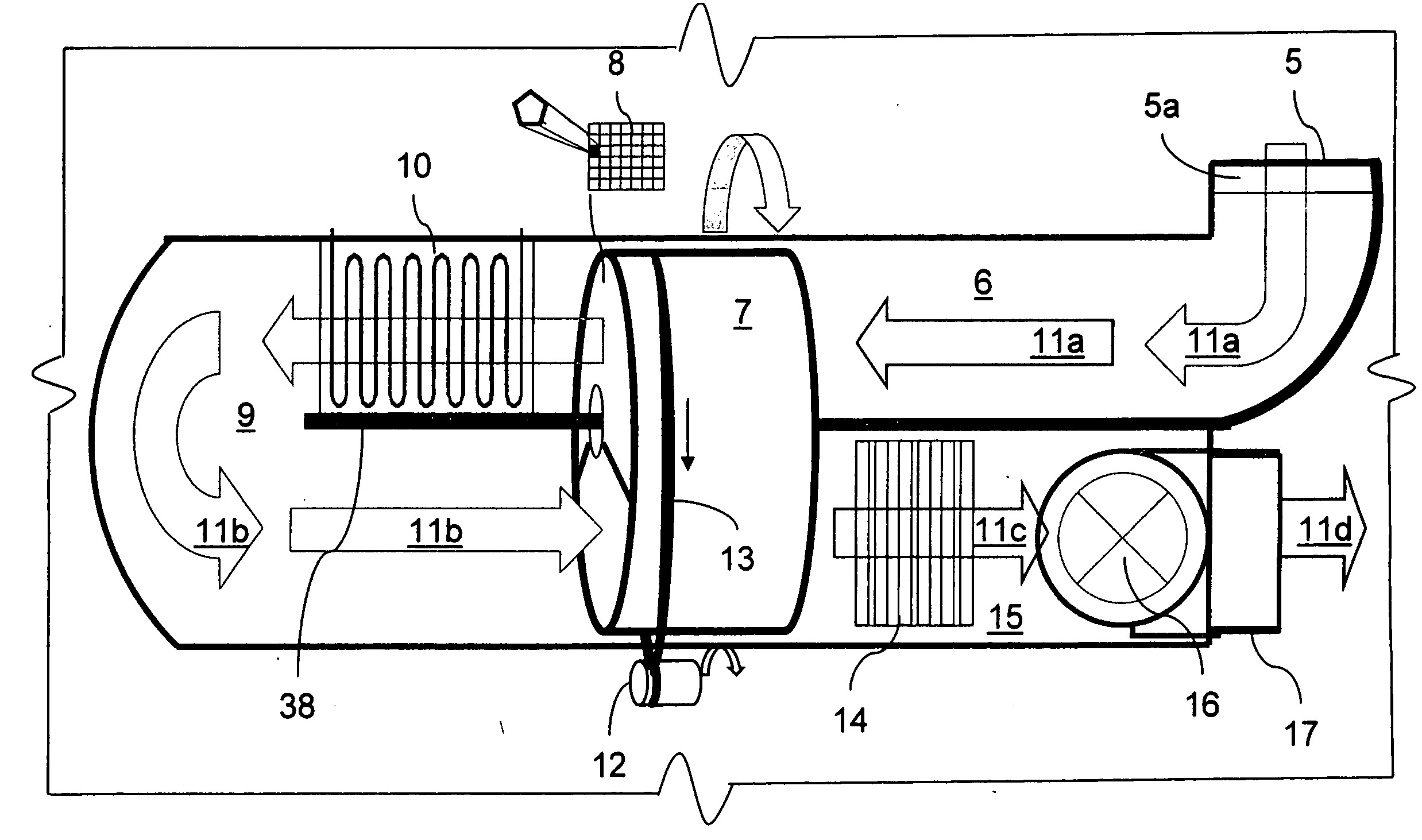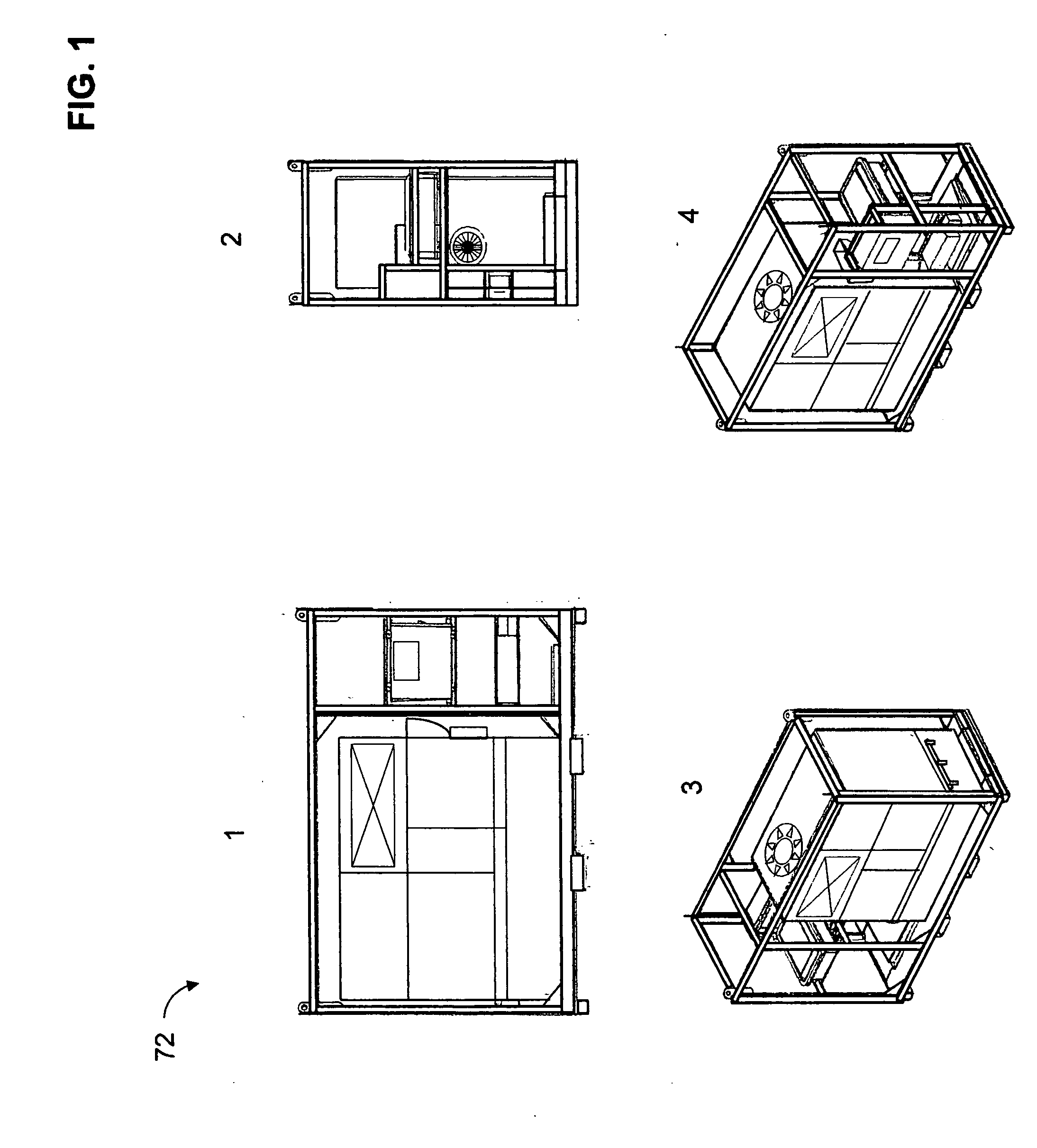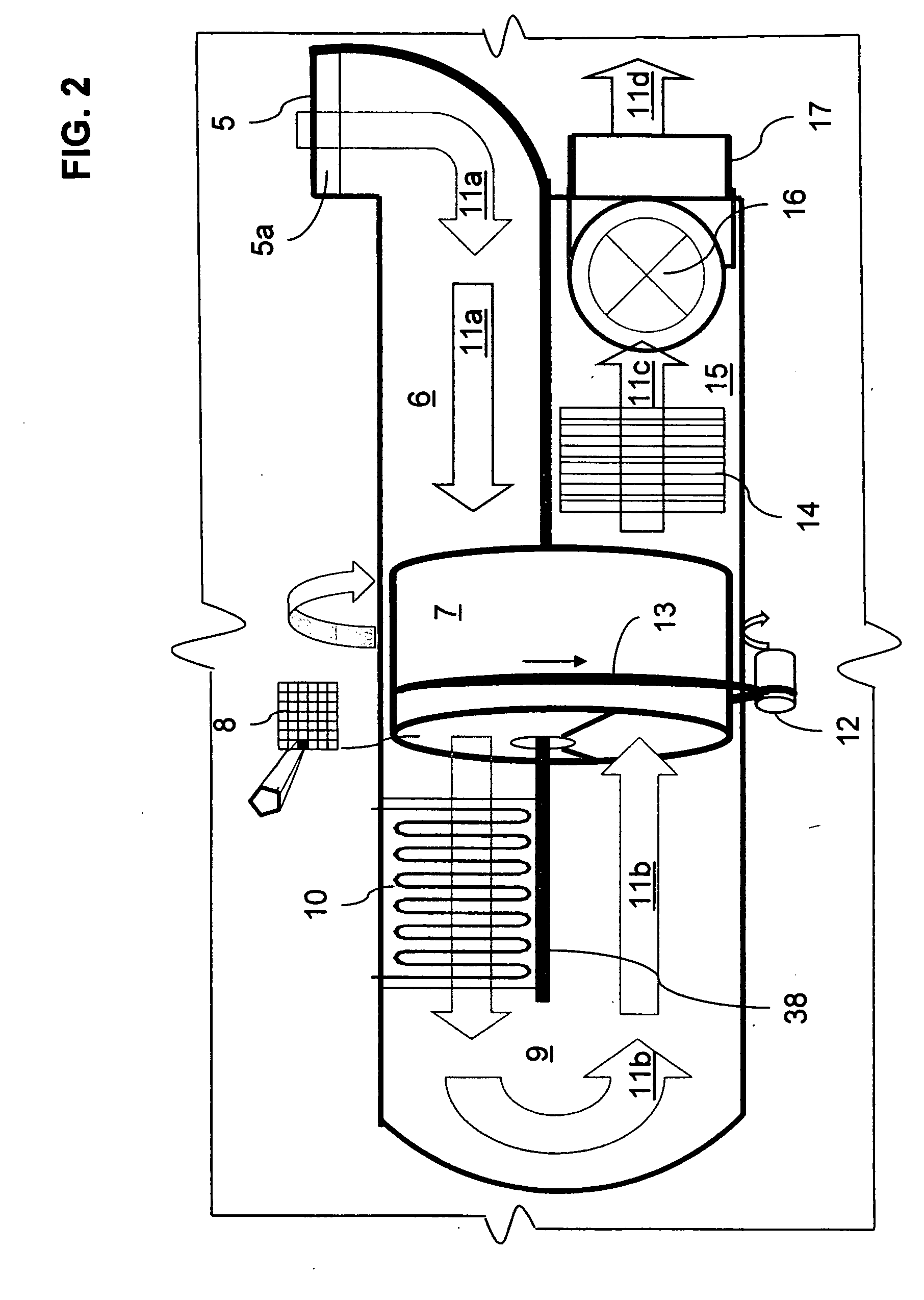PH2OCP - portable water and climatic production system
- Summary
- Abstract
- Description
- Claims
- Application Information
AI Technical Summary
Benefits of technology
Problems solved by technology
Method used
Image
Examples
Embodiment Construction
[0042]The description which follows and the embodiments described therein are provided by way if illustration of an example, or examples of particular embodiments of principles and aspects of the present invention. These examples are provided for the purpose of explanation and not of limitation, of those principles of the invention.
[0043]In the description that follows, like parts are marked throughout the specification and the drawings with the same respective reference numerals.
[0044]With regards to the nomenclature, the term “PH2OCP” as it is used throughout the specification identifies the Portable Water and Climatic Production system FIGS. 3, 4, 7, 8, 9, which will be designated generally with reference numeral 72FIG. 1. The PH2OCP system herein includes various components and main sub-systems such as; desiccant rotor or wheel technology, microwave reactivation system, the air treatment and conditioning system as well as all parts, modules and electrical components. Referring t...
PUM
| Property | Measurement | Unit |
|---|---|---|
| Diameter | aaaaa | aaaaa |
| Energy | aaaaa | aaaaa |
| Humidity | aaaaa | aaaaa |
Abstract
Description
Claims
Application Information
 Login to View More
Login to View More - R&D
- Intellectual Property
- Life Sciences
- Materials
- Tech Scout
- Unparalleled Data Quality
- Higher Quality Content
- 60% Fewer Hallucinations
Browse by: Latest US Patents, China's latest patents, Technical Efficacy Thesaurus, Application Domain, Technology Topic, Popular Technical Reports.
© 2025 PatSnap. All rights reserved.Legal|Privacy policy|Modern Slavery Act Transparency Statement|Sitemap|About US| Contact US: help@patsnap.com



